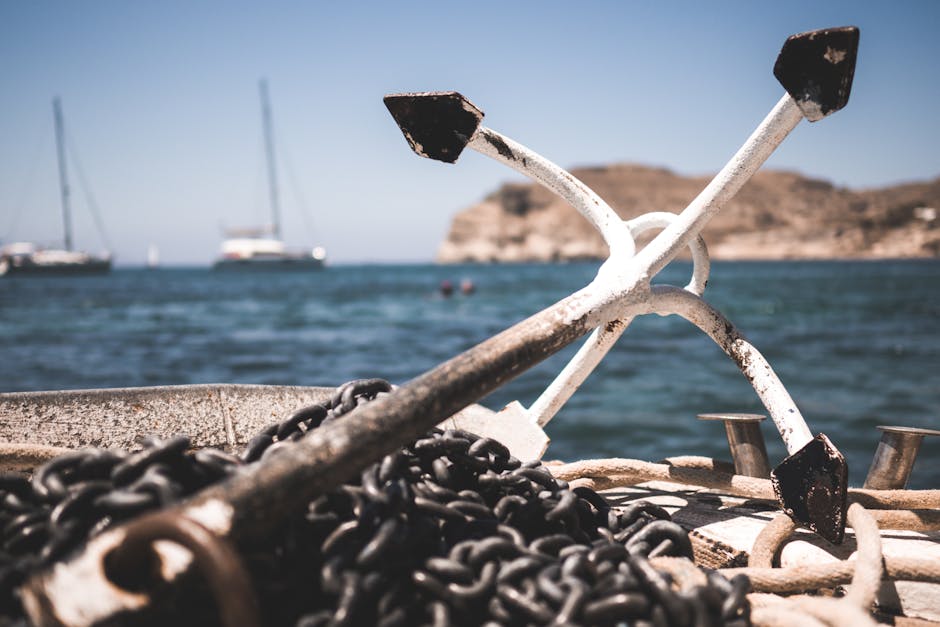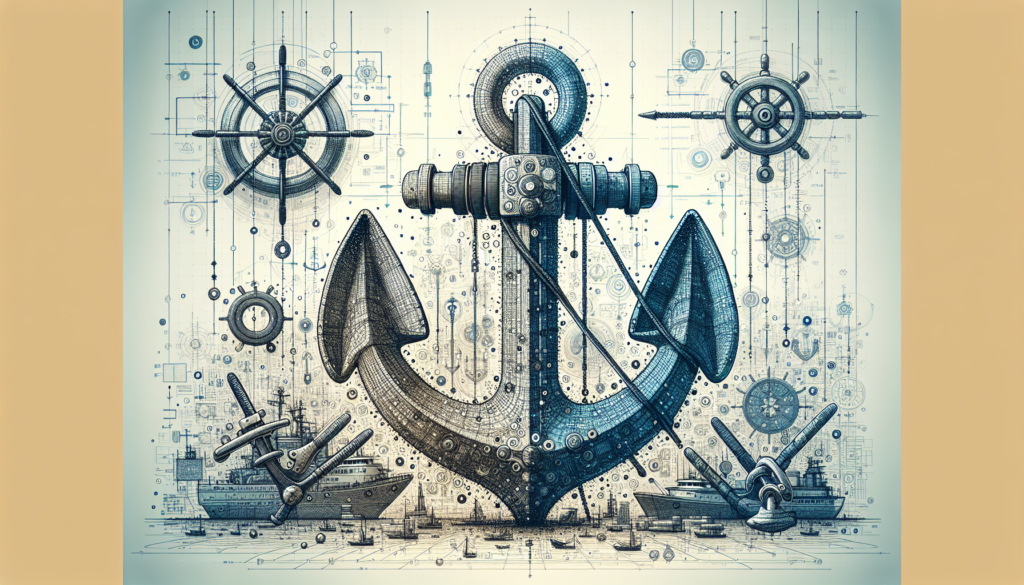Unlocking the Depths of Anchoring Systems: A Comprehensive Guide
Picture this: a massive ship navigates the tumultuous seas, its destination uncertain without a sturdy anchor to hold it steady. Anchors are not merely heavy metal objects dropped into the water; they are sophisticated systems that play a critical role in maritime operations, construction projects, and even psychological frameworks. Join us on a journey as we delve into the intricate world of anchoring systems, exploring their history, applications, controversies, and future prospects.
The Evolution of Anchoring Systems
Let’s start by unraveling the historical roots of anchoring systems. The concept of anchoring dates back to ancient civilizations, where stones tied to ropes were used to secure boats. Over time, these rudimentary anchors evolved into more advanced designs, such as the iconic fluke anchor invented by the Romans. Fast forward to the modern era, and we witness a plethora of anchor types, from the traditional claw anchor to the innovative screw anchor. Each design serves a specific purpose, whether it’s holding a ship in place or stabilizing a structure against external forces.

The Anatomy of Anchoring Systems
To truly understand anchoring systems, we must dissect their components and mechanisms. At the core of every anchor is the fluke or blade, the part that digs into the seabed or substrate. This is complemented by the shank, which connects the fluke to the anchor rode, the line or chain that links the anchor to the vessel. Additionally, some anchors feature a stock or roll bar to ensure proper orientation upon deployment. Understanding these elements is crucial for selecting the right anchor for a given situation, whether it’s a sandy seabed or rocky terrain.
Applications of Anchoring Systems
From maritime to construction industries, anchoring systems find diverse applications across various sectors. In the marine realm, anchors are indispensable for mooring ships, securing oil rigs, and even stabilizing floating platforms. On land, anchors play a vital role in construction projects, anchoring buildings, bridges, and other structures to the ground. In the world of psychology, the concept of anchoring extends to cognitive processes, where individuals use mental anchors to associate emotions or behaviors with specific stimuli. This multifaceted nature underscores the versatility and significance of anchoring systems in different contexts.
Challenges and Controversies
Despite their utility, anchoring systems are not without challenges and controversies. One of the primary concerns is environmental impact, as improper anchoring can damage sensitive marine ecosystems, such as coral reefs or seagrass beds. Additionally, the reliability of anchors in extreme weather conditions has raised questions about their safety and effectiveness. Furthermore, the use of anchors in psychological contexts has sparked debates about the ethics and implications of manipulation through anchoring techniques. Addressing these issues requires a thoughtful approach that balances practical needs with ethical considerations.
The Future of Anchoring Systems
As technology advances, so do anchoring systems, with new innovations reshaping the landscape of anchoring solutions. One promising development is the integration of smart technologies, such as GPS tracking and remote monitoring, to enhance the efficiency and accuracy of anchors. Another trend is the use of eco-friendly materials and designs to minimize the environmental footprint of anchoring operations. Looking ahead, the future of anchoring systems holds exciting possibilities, from autonomous anchors to predictive maintenance strategies that optimize performance and sustainability.
Expert Opinions: Navigating the Anchoring Landscape
Leading experts in the field of anchoring systems emphasize the importance of tailored solutions that account for specific conditions and requirements. According to Dr. Marina Lee, a marine engineer specializing in anchor technology, “The key to successful anchoring lies in understanding the dynamics of the environment and selecting the right anchor type and configuration. This involves a thorough analysis of seabed composition, water depth, and expected loads to ensure optimal performance and safety.” Dr. Lee’s insights underscore the critical role of expertise and precision in anchoring operations.
Common Misconceptions About Anchoring Systems
One common misconception about anchoring systems is that all anchors work the same way, regardless of their design or application. In reality, different anchors are designed for specific conditions, such as sandy bottoms, rocky terrain, or strong currents. Another misconception is that anchors are only used in maritime settings, overlooking their widespread use in construction, landscaping, and recreational activities. By dispelling these myths and educating the public about the versatility of anchoring systems, we can foster a deeper appreciation for their significance in various domains.
Conclusion: Anchoring Systems in Perspective
As we wrap up our exploration of anchoring systems, it becomes evident that these systems are more than just tools for securing objects; they are pillars of stability and resilience in a dynamic world. Whether anchoring a ship in a stormy sea or anchoring emotions in our minds, the concept of anchoring transcends physical boundaries to encompass psychological and philosophical dimensions. By embracing the complexity and diversity of anchoring systems, we gain a deeper understanding of their intrinsic value and enduring impact on our lives and environments. So, next time you encounter an anchor, remember the profound significance it holds as a symbol of strength, connection, and grounding in an ever-changing world.
Long story short: Anchoring systems are the unsung heroes that anchor us in turbulent seas and uncertain landscapes, providing stability and security in a world constantly in flux. Let us appreciate the depth and breadth of anchoring systems, from their historical evolution to their future innovations, and recognize the profound influence they have on our lives and society as a whole.



